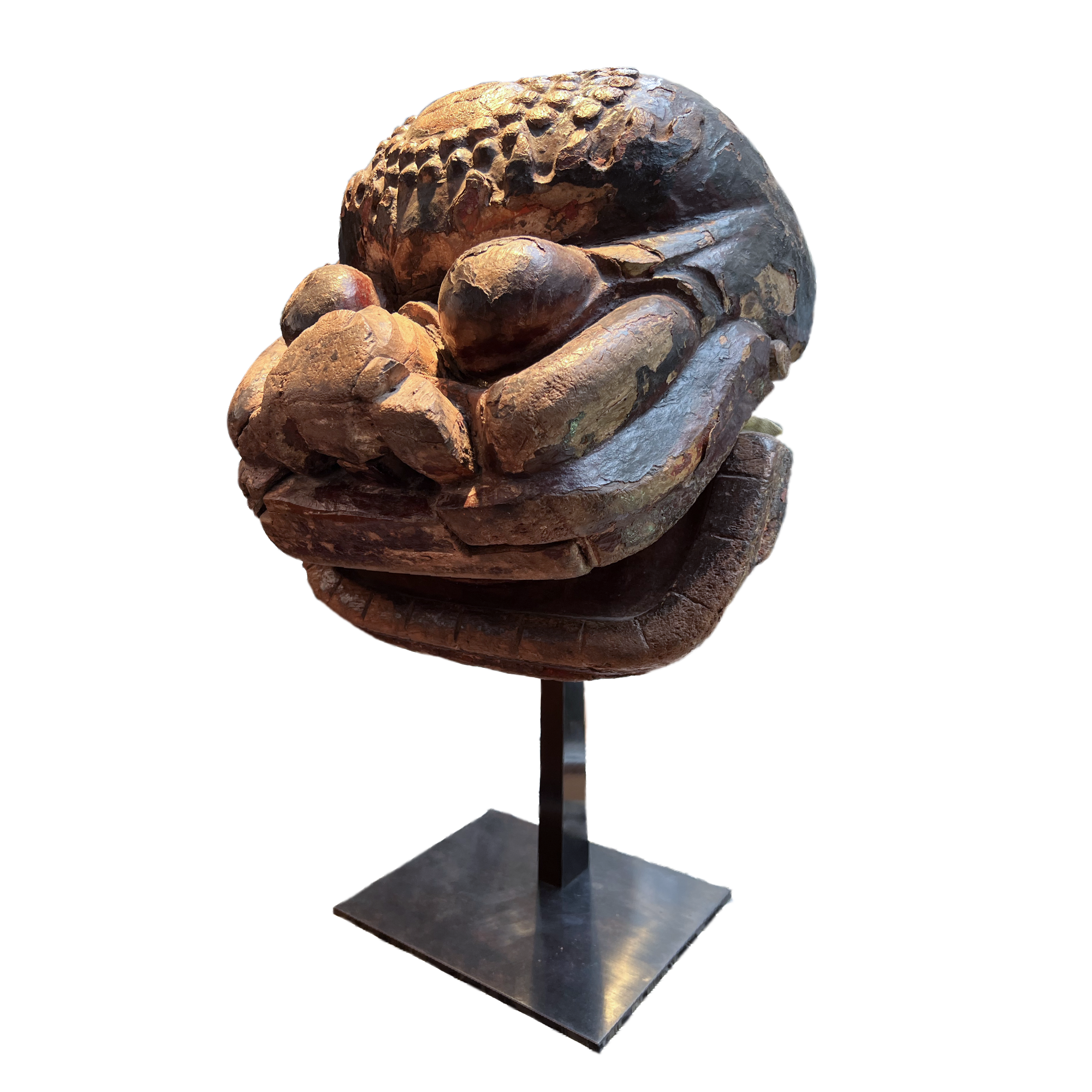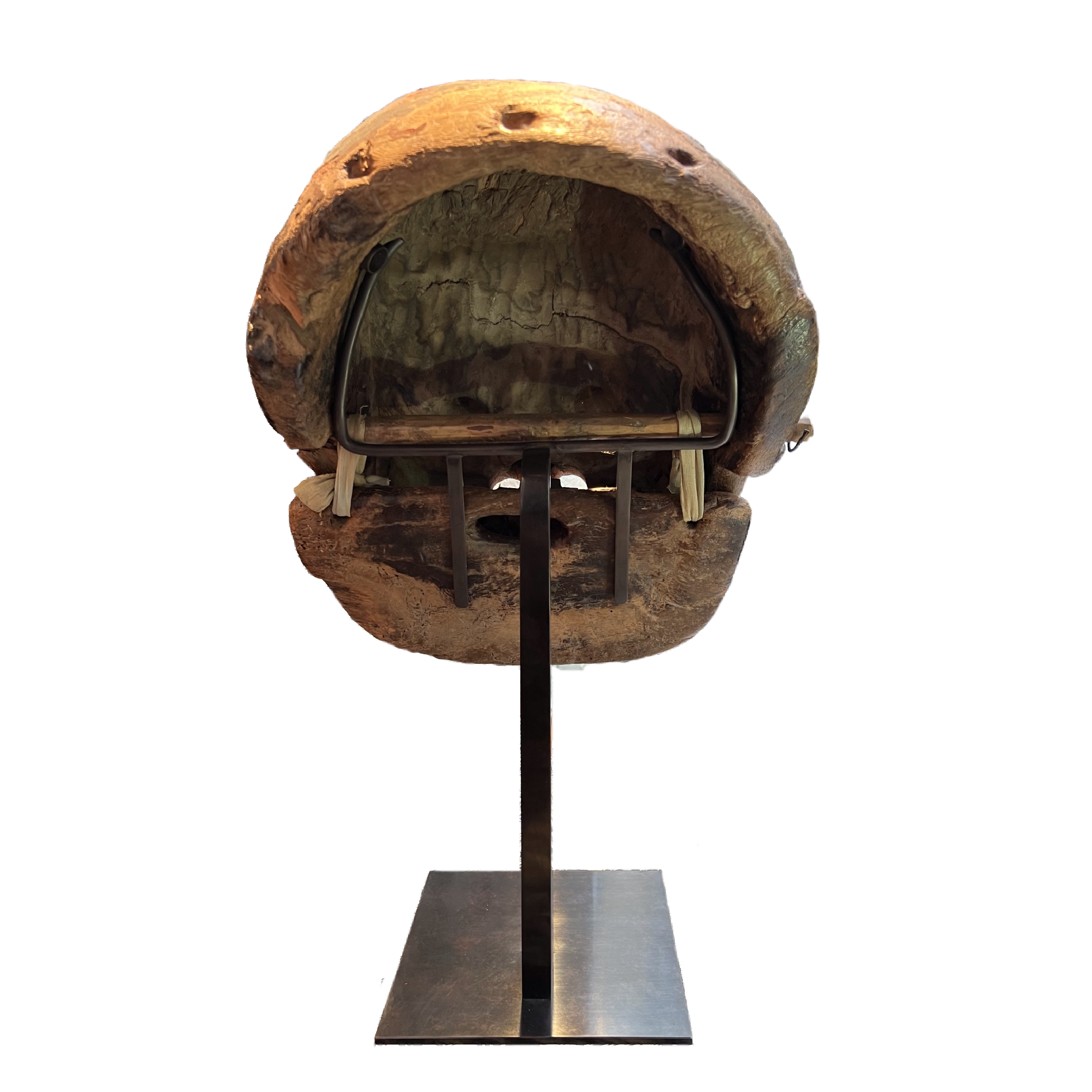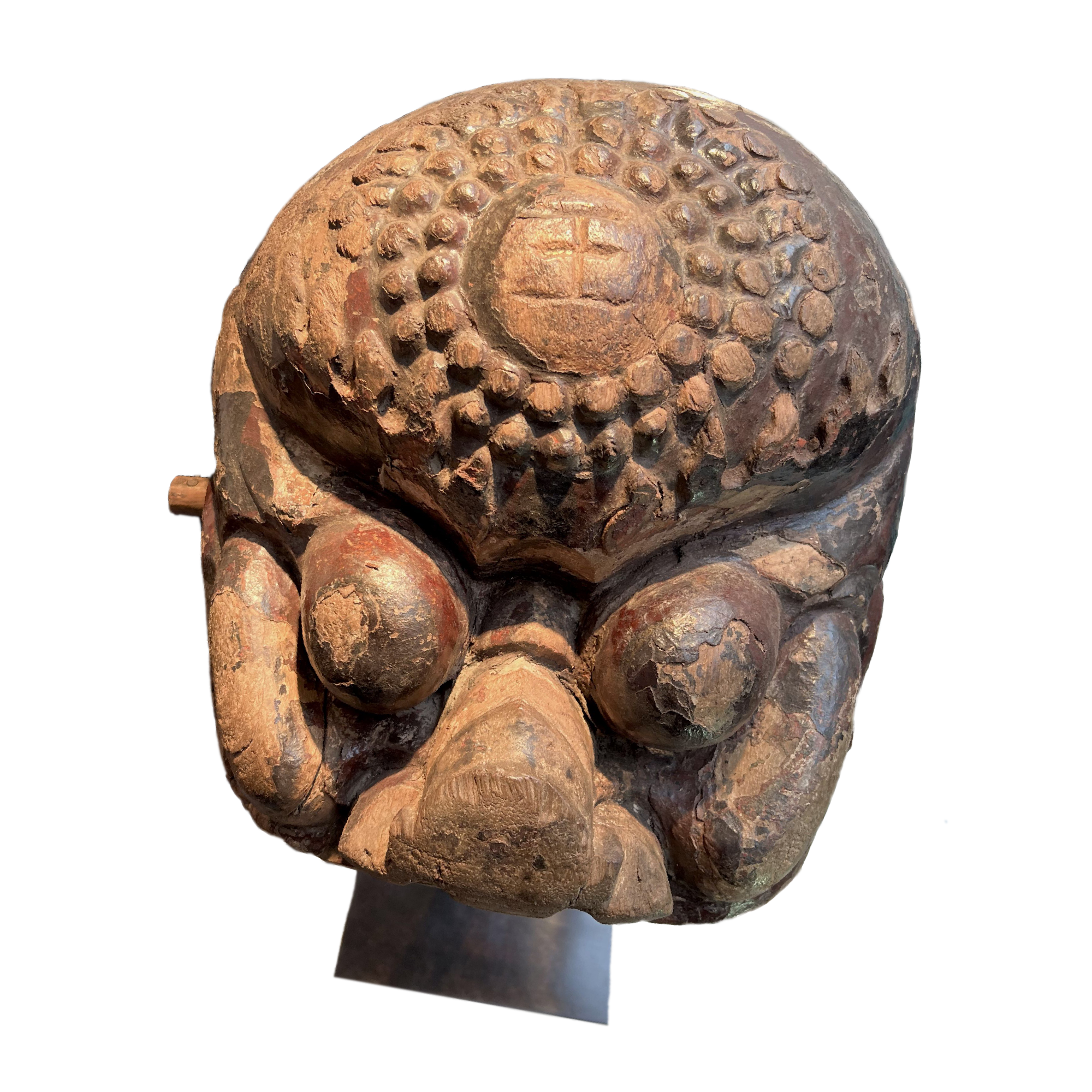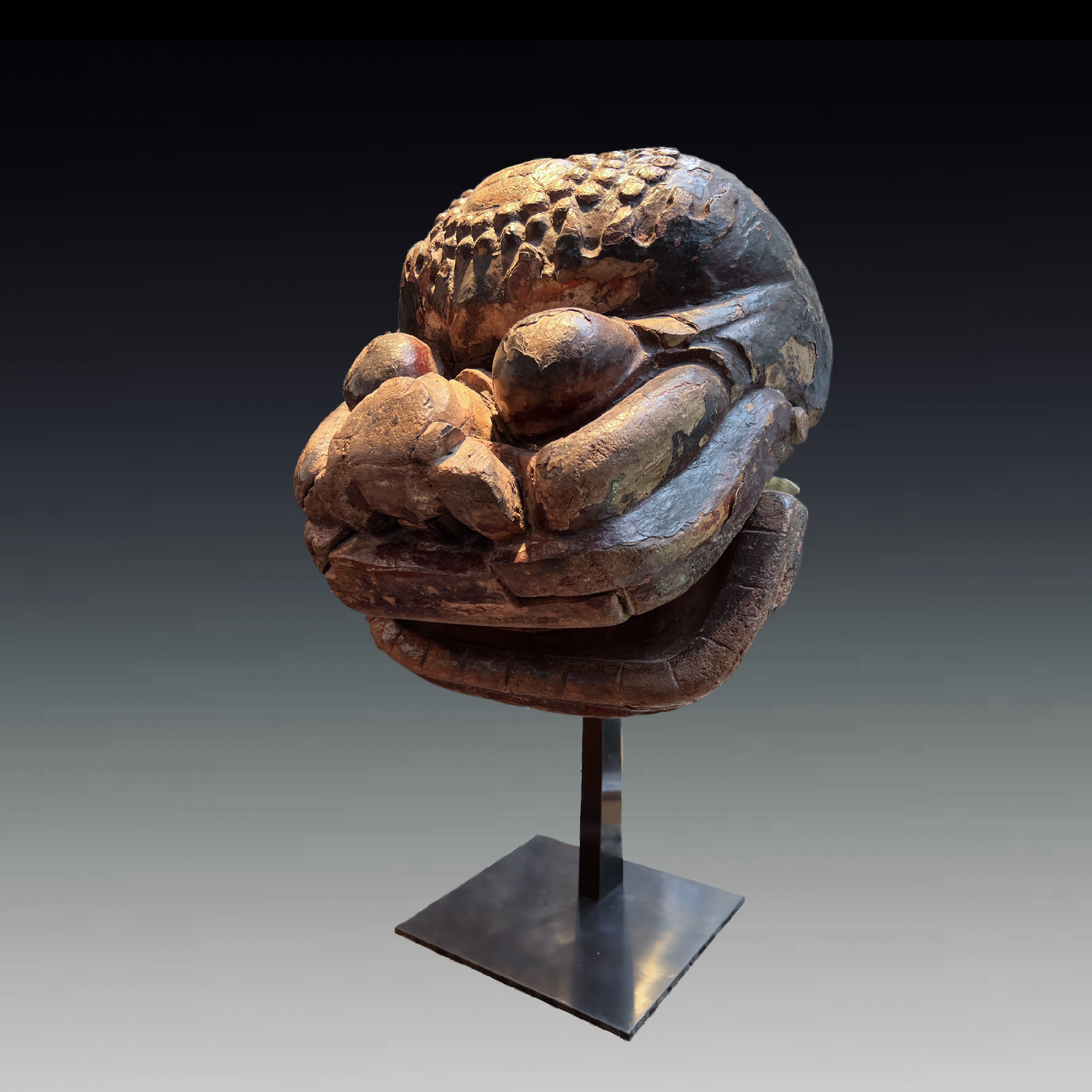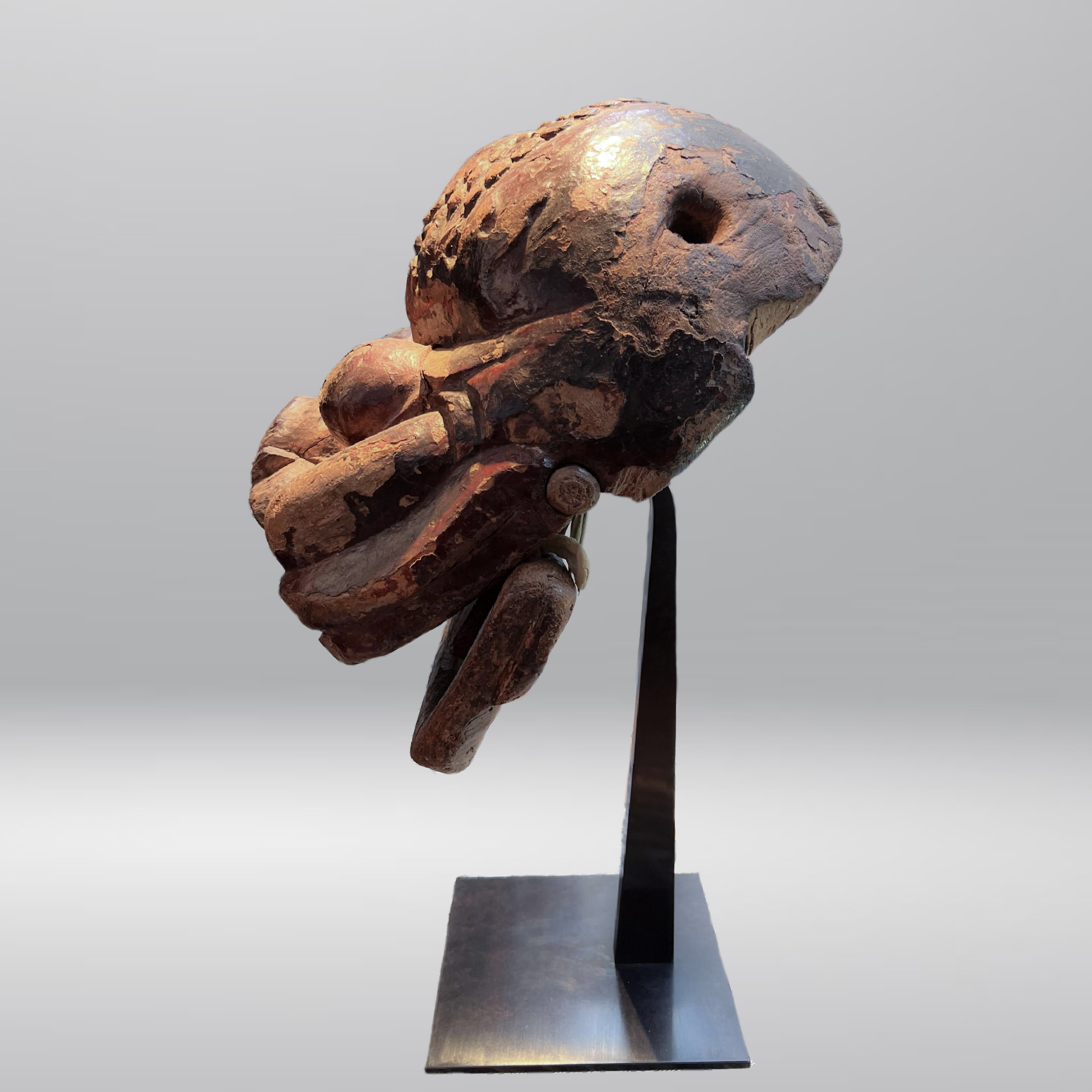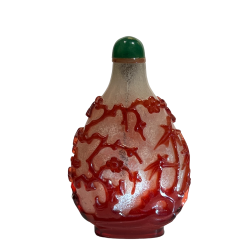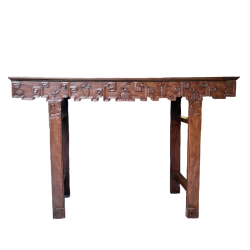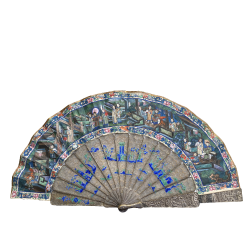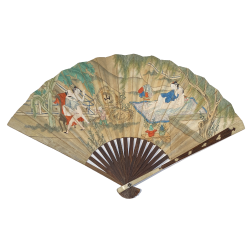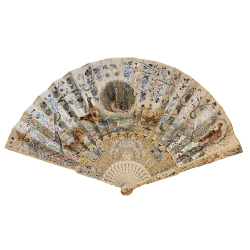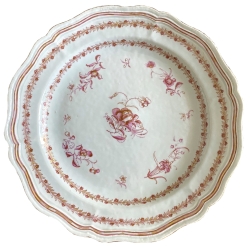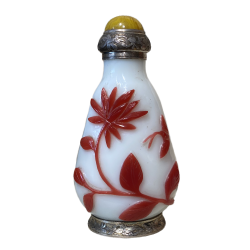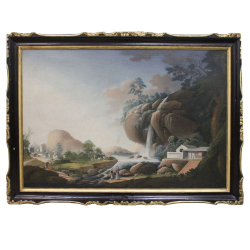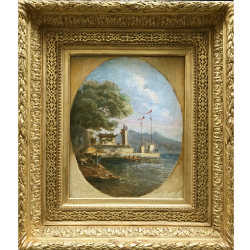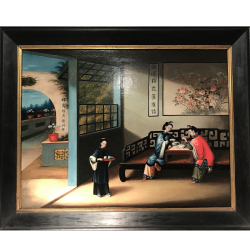
EXPERT ART d'ASIE Cristina ORTEGA Expert CNES et CEFA rts de la Chine et du Japon Asian Art-
Expert Chine Japon- Expert Asian Art - Carré Rive Gauche Paris Rue de Beaune- Expert art d Asie
Vendu Chine, Grand masque Lion/Tigre, période Qing, XVIIIe siècle
Chine, Grand masque Lion/Tigre, période Qing, XVIIIe siècle
Ce spectaculaire masque articulé de grande taille représente le lion ou le tigre. Il était utilisé dans le théâtre Nuo. Nuo signifie en chinois "expulser les démons".
Il était porté par la barre transversale à l’arrière et a une mâchoire articulée qui était actionnée par le danseur qui la faisait claquer.
La marque Wang sur le devant signifie roi et représente le lion mais aussi le tigre qui a naturellement cette marque sur la tête.
Seuls les hommes étaient autorisés à fabriquer et à utiliser des masques nuo. Lors des cérémonies, les hommes portant un masque étaient considérés comme possédés par un dieu ou par un esprit divin. Le masque lion/tigre était utilisé dans les pièces de théâtre mais aussi dans les rituels processionnels.
Hauteur avec socle : 57cm 40x32cm
Chine, période Qing, XVIIIe siècle
China, Large Lion/Tiger mask, Qing period, 18th century
This spectacular articulate mask of large size represents the lion or the tiger.It was used in the Nuo theater. Nuo means in Chinese “expelling demons”.
It was held by a transversal bar on the back and has articulated jaws that were moved and clap by the dancer.
The Wang mark on the front means king and represents the lion but also the tiger who naturally has this mark on his head.
Only men were authorized to make and use nuo masks. During ceremonies, men wearing a mask were considered to be possessed by a god or by a divine spirit.
The lion/tiger mask was used in plays but also in processional rituals.
Height with stand : 57cm 40x32cm
China, Qing period, 18th century

